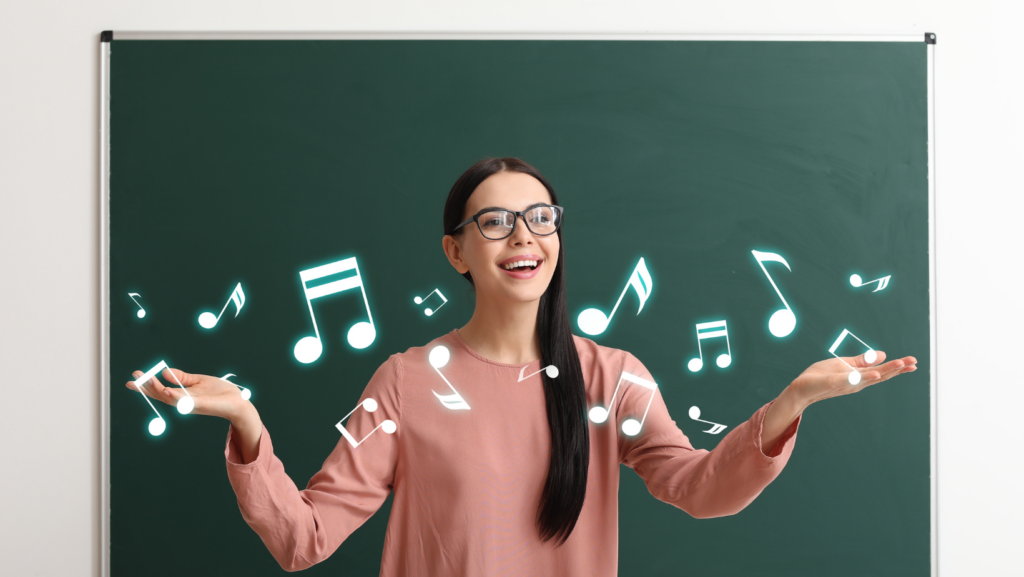In the symphony of learning, technology has become the new maestro, orchestrating a transformation in music education.
So, let’s hit the right note and dive into the fascinating world of technology in music education. Because in today’s world, you don’t just listen to the music—you live it, learn it, and create it, all with the help of technology.
Technology in Music Education
As the digital revolution grips every avenue of life, technology in music education is no exception. The integration of technology delivers substantial benefits, ranging from enhanced learning experiences to greater inclusivity.
Enhanced Learning Experiences
Technology transforms music classes from mere theoretical exercises into practical, hands-on experiences. For instance, digital software like GarageBand and Soundtrap empower students to actively create music. They’re not limited to just observing or listening; they become part of the creation process. This hands-on approach fuels creativity, enabling the application of theoretical knowledge in an engaging and impactful manner.
Accessibility and Inclusivity
 Besides enhancing learning experiences, technology contributes significantly to accessibility and inclusivity in music education. Digital platforms and tools democratize music education, making it accessible to all, regardless of their geographical location or economic status. For example, free software like MuseScore provides a platform for those who can’t afford expensive composition software or classes.
Besides enhancing learning experiences, technology contributes significantly to accessibility and inclusivity in music education. Digital platforms and tools democratize music education, making it accessible to all, regardless of their geographical location or economic status. For example, free software like MuseScore provides a platform for those who can’t afford expensive composition software or classes.
Moreover, the advent of virtual classes and tutorials ensures that learning isn’t confined to classrooms. Students can learn at their own pace, catering to individual learning styles and capabilities. This promotes a more inclusive and diverse music education landscape.
In the disability context, technology is a game-changer. Assistive tech tools like Skoog make music more accessible to learners with disabilities.
Key Technologies Transforming Music Education
Digital Audio Workstations (DAWs)
 Digital Audio Workstations, commonly referred to as DAWs, significantly enhance the music education landscape. They provide the platform that facilitates creativity by combining numerous tools into a single, cohesive digital unit. Examples include Cubase, Ableton Live, and FL Studio. DAWs encompass a broad range of musical functionalities — from recording live instruments, synthesizing sounds, to mixing and mastering tracks, offering an extensive learning environment. Breakthroughs in accessibility allow these technologies to open doors to all learners, even for those with disabilities. The result: a vibrant, inclusive music education environment, spurred by DAWs-advancements.
Digital Audio Workstations, commonly referred to as DAWs, significantly enhance the music education landscape. They provide the platform that facilitates creativity by combining numerous tools into a single, cohesive digital unit. Examples include Cubase, Ableton Live, and FL Studio. DAWs encompass a broad range of musical functionalities — from recording live instruments, synthesizing sounds, to mixing and mastering tracks, offering an extensive learning environment. Breakthroughs in accessibility allow these technologies to open doors to all learners, even for those with disabilities. The result: a vibrant, inclusive music education environment, spurred by DAWs-advancements.
Online Platforms and Apps
Transformative shifts in music education also see roots in various online platforms and apps. For instance, Soundtrap — an online music studio, pushes boundaries in collaborative learning, enabling students to create music together from different locations. Similarly, apps like Yousician combine intuitive visual representations with feedback and progress tracking, taking digital learning to a whole new level. Edtech apps like these, typically offering personalization and interaction, increase student engagement, allow for self-paced learning, and foster a learner-centric approach.
Virtual and Augmented Reality in Music Learning
 In addition to DAWs and online platforms, Virtual Reality (VR) and Augmented Reality (AR), act as catalysts in revolutionizing the canvas of music education. Examples of immersive music learning platforms include Melody VR and Soundscape VR. These technologies encapsulate the learner in a fully interactive and immersive environment, enabling the experience of music in a unique, three-dimensional format. This immersive approach to learning, making it possible to ‘feel’ and ‘interact’ with music, reinforces the connection between the learner and the musical content, resulting in more effective and memorable learning experiences.
In addition to DAWs and online platforms, Virtual Reality (VR) and Augmented Reality (AR), act as catalysts in revolutionizing the canvas of music education. Examples of immersive music learning platforms include Melody VR and Soundscape VR. These technologies encapsulate the learner in a fully interactive and immersive environment, enabling the experience of music in a unique, three-dimensional format. This immersive approach to learning, making it possible to ‘feel’ and ‘interact’ with music, reinforces the connection between the learner and the musical content, resulting in more effective and memorable learning experiences.
It’s evident that technology in music education is transformative. Interactive software, DAWs, and online platforms are reshaping the way students learn and create music. The advent of VR and AR has added another layer to this evolution, offering immersive experiences that push the boundaries of traditional learning. However, the digital divide and the need for a balanced approach to music education present significant challenges. The future of music education hinges on addressing these issues, ensuring all students can reap the benefits of both traditional methods and technological advancements. The fusion of the old and the new may well be the key to a harmonious future in music education.

